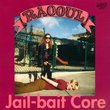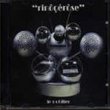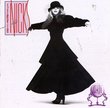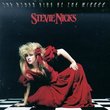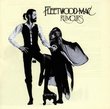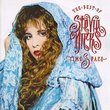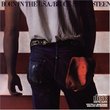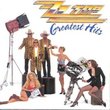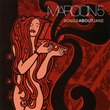| All Artists: Stevie Nicks Title: Bella Donna Members Wishing: 5 Total Copies: 0 Label: Atlantic / Wea Original Release Date: 1/1/1981 Re-Release Date: 10/25/1990 Genres: Pop, Rock, Classic Rock Styles: Soft Rock, Album-Oriented Rock (AOR) Number of Discs: 1 SwapaCD Credits: 1 Other Editions: Bella Donna (Remastered) UPCs: 075679042729, 0077779300853, 077779300822, 081227871161, 643346022116 |
Search - Stevie Nicks :: Bella Donna
 | Stevie Nicks Bella Donna Genres: Pop, Rock, Classic Rock
No Description Available No Track Information Available Media Type: CD Artist: NICKS,STEVIE Title: BELLA DONNA Street Release Date: 07/07/1987 |
Larger Image |
CD DetailsSynopsis
Product Description No Description Available No Track Information Available Media Type: CD Artist: NICKS,STEVIE Title: BELLA DONNA Street Release Date: 07/07/1987 Similar CDs
Similarly Requested CDs
|
Member CD ReviewsReviewed on 5/31/2007... Cd and case are in great Condition. 0 of 4 member(s) found this review helpful.
CD ReviewsOne of the Best Releases of the 1980s Gary F. Taylor | Biloxi, MS USA | 09/13/2003 (5 out of 5 stars) "Throughout the 1970s Stevie Nicks was among the "golden line up" of the legendary Fleetwood Mac, and her lyrics and vocals did much to fuel the band's remarkable success on such releases as RUMORS. Still, when Nicks announced that she was going solo, there were naysayers aplenty. Many felt that Nicks' success with Fleetwood Mac rested in part on the musical settings created for her by various band members; others felt that she lacked the business know-how to put a solo deal together.But Nicks proved much more artistically resourceful and a much tougher deal-maker than her critics expected. Released in 1981, BELLA DONNA exploded to the top of the charts. Throughout the 1980s Nicks would score further solo successes with THE WILD HEART and ROCK A LITTLE; at the same time she remained a mainstay of the on-again-off-again Fleetwood Mac. And she would become one of the most admired performers of the decade.Whatever the merits of her other work, BELLA DONNA remains Nicks' single best selling solo effort, a release beloved by fans and admired by critics alike. And it isn't hard to see why. Although Nicks had done some very tough rock and roll with Fleetwood Mac, and had often performed folk and country-flavored songs with the band, BELLA DONNA extended her range in both directions. At the same, however, she did not make the mistake of doing material so completely different as to alienate her core fans, preferring instead to elaborate her previous work than to dismiss it completely.The result is a series of songs that are very clearly by the same Stevie Nicks who performed with Fleetwood Mac--but which don't simply repeat the sound she acheived with that band. Perhaps the most obvious example is the opening title cut, which sounds very much like something Fleetwood Mac might have done, but which gradually turns in a number of directions that one would never expect from that band--a sort of fusion of Nicks' previous work and the new music she is about to present.Nicks had done some fairly hard rockers with Fleetwood Mac, but with "Edge Of Seventeen" she takes her skills in that direction to the max, creating a hard, hard, hard rock vocal to a driving beat against a background of some the tightest back-up vocals you've ever heard any where. Her duet with Tom Petty, "Stop Draggin' My Heart Around," is done at a slower tempo but still creates a hard rock sound, and Nicks and Petty's voices are remarkably well blended. Nicks also veers more significantly toward a country music tone than she had in the past with "After the Glitter Fades," which proved a cross-over hit on the country charts, and her duet with Don Henley, "Leather and Lace," mixes pop and country idioms to tremendous effect.If these cuts at least reference her original sound with Fleetwood Mac, the remaining cuts might have been written with Fleetwood Mac specifically in mind--and very likely were, songs that were probably never recorded for lack of space. "Kind of Woman," "Think About It," "How Still My Love," and most particularly "Outside the Rain" are very much in the Fleetwood Mac style, all of them expertly done, and all of them memorable.In spite of her success as a solo artist, Nicks would continue to work with Fleetwood Mac--and fortunately so, for whereas her work with Fleetwood Mac would still find her in top form, her post-ROCK A LITTLE solo releases became increasingly problematic until her stunning TROUBLE IN SHANGRI-LA. But whatever her ups and downs, Nicks has remained one of the most interesting performers of her generation, a woman with a unique voice, a talent for creating unusual lyrics, and a powerhouse presence. It's hard to imagine any other performer quite like her. And BELLA DONNA remains one of her best. Recommended.--GFT (Amazon.com)--" Stevie touched gold from her first solo release onwards. Themis-Athena | from somewhere between California and Germany | 03/13/2002 (5 out of 5 stars) ""I never thought I'd make it here in Hollywood," Stevie Nicks sings in "After the Glitter Fades," the fifth of the ten tracks on her first solo album "Bella Donna." And when that record was released, its success seemed, indeed, anything but guaranteed.
Sure, this was the magical frontwoman of one of rock history's most successful bands, Fleetwood Mac, a compulsive songwriter who had never found a sufficient outlet for her creativity in the context of her band; and the personification of the ethereal witch character she had created in her trademark song "Rhiannon." But Stevie as a solo artist? The doubters were many. Doom was prophesized for Fleetwood Mac which, as conventional wisdom had it, was sure to break up regardless of the success of Nicks's solo career, by virtue of the mere fact that she was going solo. Besides, would her dreamy persona work as well as a solo artist as it did in the context of her band? Last but not least, did Nicks, who had lived the high life ever since her career took off with Fleetwood Mac, be disciplined enough to make it through the production of a solo album? The answer to the last question was a resounding "yes," thanks in no small part to producer Jimmy Iovine, brought in by record executive Paul Fishkin who had created his Modern Records label specifically for the production of Nicks's album. (Soon Iovine was so enthralled with Nicks, who returned the feelings, that they embarked on a several year-long relationship.) Iovine and Fishkin decided to present Nicks as a rock singer first and foremost; and indeed, the production credits of "Bella Donna" list many members of rock music's elite - more than one of whom later repeatedly returned to perform with Stevie Nicks; most notably Waddy Wachtel, long since the steady force at the heart of her live appearances, Tom Petty and almost all of his Heartbreakers, Don Henley and fellow ex-Eagle Don Felder, and of course Nicks's faithful background singers, Lori Perry and Sharon Celani. But while the album does feature several straightforward rock songs - the best-known of them "Edge of Seventeen," one of her all-time greatest hits; and her duet with Tom Petty, "Stop Draggin' My Heart Around," the only song on the album not at least co-written by Nicks but by Petty and the Heartbreakers' guitarist Mike Campbell (the demo version was eventually released on Petty's 1995 "Playback" compilation) - there is still plenty of magic in true "Stevie style." The album's title track recalls Rhiannon's high flight when Nicks sings about her Bella Donna: "You can fly swinging from your trapeze, scaring all the people ... but you'll never scare me." "The Highwayman" describes a similarly enchanting woman's eternal chase of her man, "the one that comes and goes:" "And she in all her magic, with hands as quick as light, took him to be a challenge - her horse is like a dragonfly - and then he sees her coming - considers slowing down; but then ... he could never win; and she ... out in the distance sees him against the sky: A pale and violent rider, a dream begun in wine. - Today and still today they ride; will they ever win? He the glory, she the love ... Still they try again." The straightforwardly autobiographical "After the Glitter Fades" describes Nicks's incredible success ("what I seem to touch these days has turned to gold") and muses that despite all let-downs, "even though the living is sometimes laced with lies - it's the only life I've ever known - it's alright ... the feeling remains ... even after the glitter fades." And for "Leather and Lace," like her duet with Tom Petty long since one of the most famous duets of rock history and originally written for Waylon Jennings and his then-girlfriend Jessi Colter, Nicks asked longtime friend Don Henley to join her for the production of what was planned as a mere demo version of the song. Then Jennings and Colter unexpectedly broke up before they had recorded it, and the version generations of fans have come to know and love ended up on "Bella Donna." (Since Waylon Jennings's untimely passing, Nicks has taken to dedicating the song to him when performing it live.) Stevie Nicks's first solo album, dedicated to her very first duet partner and musical influence, her grandfather AJ, and to Jimmy Iovine, "for giving me back my music," sold nearly 2,000,000 copies and hit No.1 in the album charts within the first two months after its July 1981 release. Both Nicks's duets with Tom Petty and Don Henley were Top 20 hits; so was "Edge of Seventeen." On September 3, 1981, Rolling Stone Magazine crowned her "the Queen of Rock'n Roll." While Fleetwood Mac did eventually break up (and subsequently reunited), that breakup, according to band members, had less to do with Nicks's solo career (actually, she did all she could to keep her solo flight from impacting the band) and more with the frictions and shifting dynamics within the entire band. Stevie Nicks's solo career, started with the premise set by Jimmy Iovine (as recounted by Nicks and Iovine for VH1's "Behind the Music") that it was to be approached "like you've never made an album before," as more than a hobby but "not big rock'n roll; [rather] something you have never done before," because Nicks was "not a proven solo artist in any way, shape, or form," soon became one of the most successful careers in rock history; equaling - no, surpassing her success with Fleetwood Mac. It provided a long-overdue outlet for her musical creativity and allowed her to expand her range into straightforward rock music territory. Despite later setbacks, Stevie Nicks is still around; and her most recent release, "Trouble in Shangri-La," is her strongest since her 1981 solo debut. "Bella Donna" was the foundation of all that, and more. It is not to be missed. Also recommended: Enchanted: The Works of Stevie Nicks Trouble in Shangri-La Fleetwood Mac - The Dance" |

 Track Listings (10) - Disc #1
Track Listings (10) - Disc #1
